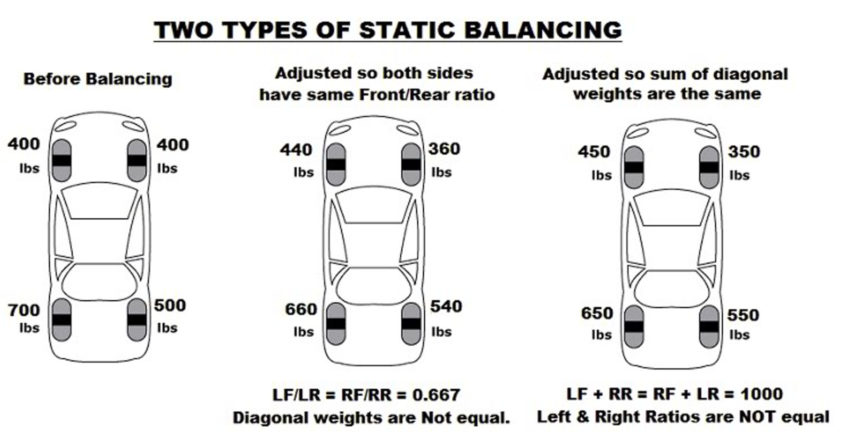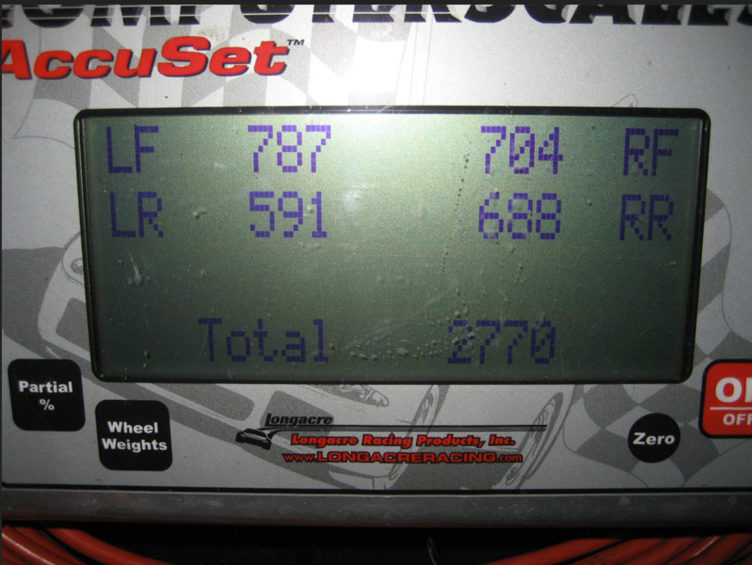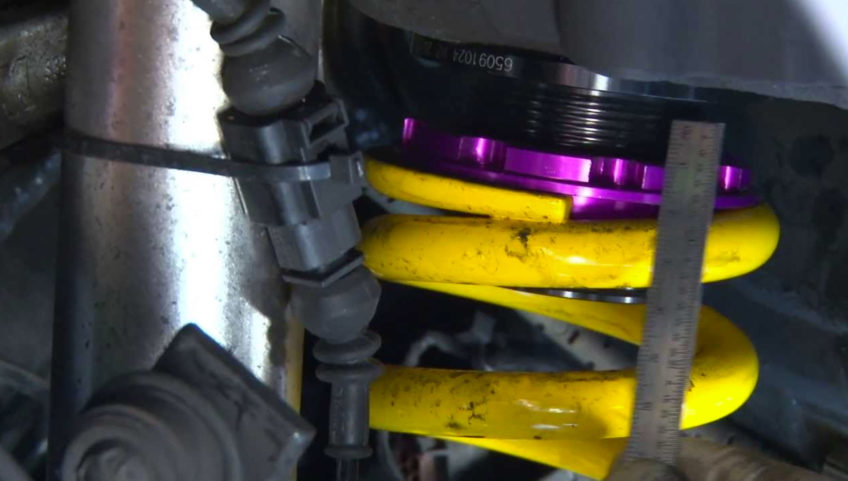It’s all well and good splashing out on stiffer springs, coilovers, beefier anti-roll bars and various support braces to firm up you car’s ride and get it sitting how you want. But if you don’t get your weight distribution even it won’t handle as well as it could, and it will be rubbish on the track. Here’s an explanation of ‘corner weighting’ and how to achieve the perfect balance…
It’s not rocket science. In fact, getting your car’s weight distribution even on all four corners is a bit like getting all four legs on a table the same length. If one leg’s shorter than the other, the whole thing will be out of kilter!

Corner balancing is the process whereby the diagonal weight distribution on the tyres is even. For this, the driver needs to be in the car, there needs to be the right amount of fuel in the tank and all the other fluids have to be topped up in order to replicate race conditions.
To get the weight distribution even, you can fiddle around with the static weight which means physically shifting weight around on the vehicle. That might mean relocating batteries etc, and even using lead ballast to balance everything out.

You might hear experts talk about two factors when it comes to weight distribution; left weight percentage and rear weight percentage, the former being intended to account for the weight of the driver. You don’t need to know how these are calculated, because an electronic scale will work these out for you.
In a nutshell, when talking about diagonal weight or ‘cross weight’ the left front and right rear should weigh the same as the right front and left rear – a 50/50 cross balance. If it’s too far off this, the handling characteristics will be different between a left- and a right-hand turn. That’s not necessarily a bad thing. It might be that your car ends up handling better on right turns, which is fine if a track has more right turns than lefts – but not so good if there’s an equal amount of both. Of course for the really skilled driver where every marginal gain counts, they will custom corner balance their car for each individual track.

Of course this is getting vastly over-complicated for the majority of novice drivers who just want to get their car to grip and go quickly around corners. Here it’s a case of managing where you distribute weight; so over the back for traction, the front for braking and on the left or right for cornering. Suffice to say, for most track-day newbies, honing driving techniques will pay bigger dividends than worrying about corner weighting.
When it comes to putting your car on the scales, it’s a case of getting tyre pressures right and disconnecting the anti-roll bar to remove friction from the suspension. The readout will tell you how evenly your car’s weight it distributed. If one corner has more weight on it than another, you can reduce that weight by lowering the ride height in just that corner (by adjusting the coilover sleeve, for example), which will decrease weight on the diagonally opposite corner at the same time. Needless to say, it’s a somewhat time consuming business and small adjustments are needed to get it spot on. Corner balancing can also be done by adding to weight to the car where it is needed, or moving components. For this, weight plates, dumbells, plastic water containers, sandbags and lead bars all have their uses.

So there you have it. It’s not something everyone will bother doing. But if you’re looking to gain a bit of an edge when it comes to handling, how your car’s weight is distributed is certainly worth further investigation.
Ian
The opinions expressed here are the personal opinions of the author and do not necessarily represent the views and opinions of VW Heritage

